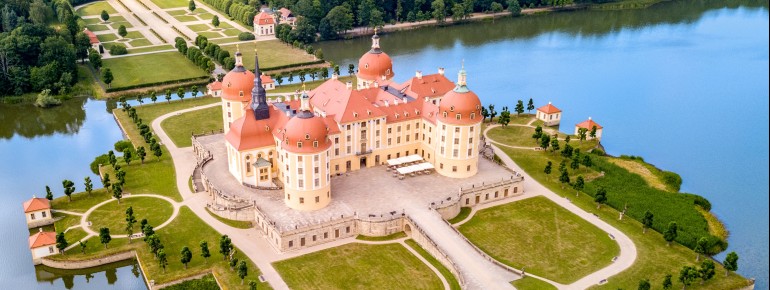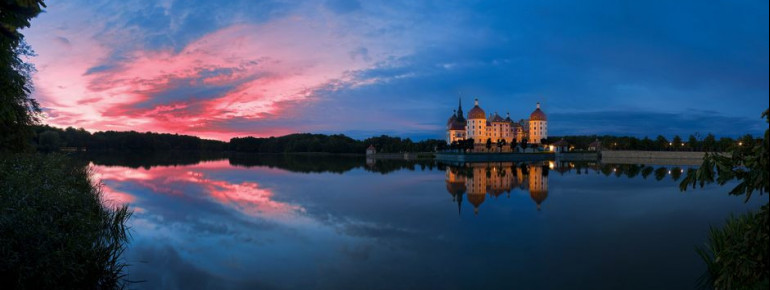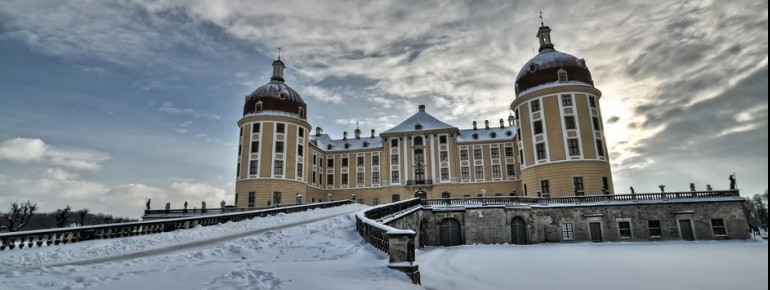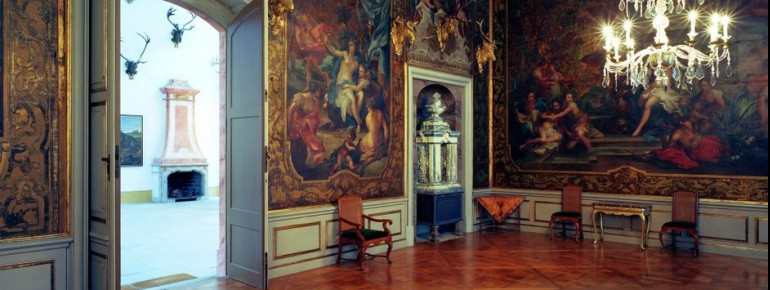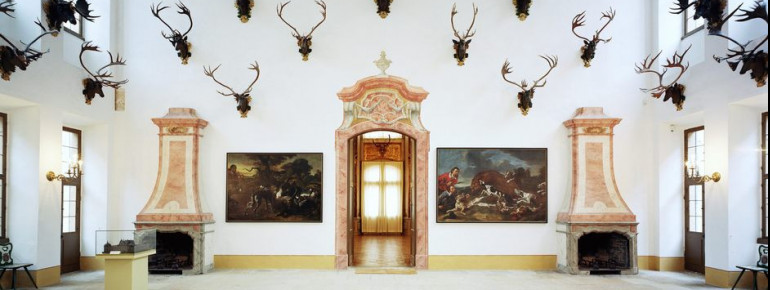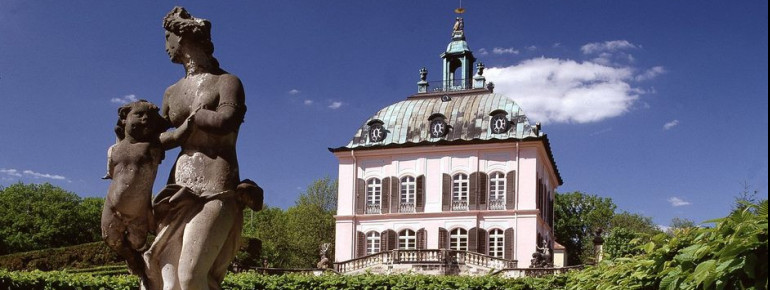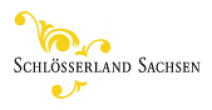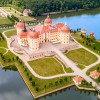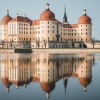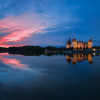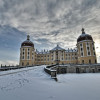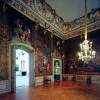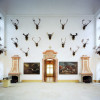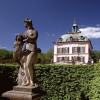Contents
Description

One of the most beautiful and impressive castles in Saxony is the Baroque Castle Moritzburg near Dresden. It gained European fame through the fairytale film "Three Wishes for Cinderella" in the 1970s.
Fairytale Castle
In keeping with the fairytale, the castle turns into a magical fairytale backdrop during the Christmas season. Starting in November, you can learn everything there is to know about the movie and the fairytale Three Hazelnuts for Cinderella. Being the original location for the German-Czech filming of 1973, Moritzburg Castle lets you peek behind the scenes of the fairytale in its winter exhibition.
Armory
One of the main attractions of the castle is undoubtedly the magnificent armory. Here, visitors can admire an impressive collection of armor, weapons, and hunting trophies. This unique exhibition offers a fascinating insight into the hunting culture and martialhistory of Saxony.
The Museum
There is also a lot to see in the castle museum. In addition to the Baroque Exhibition with leather tapestries, furniture, porcelain and the largest collection of hunting trophies, you can admire the Feather Room with August the Strong's four-poster bed. The exhibition on Moritzburg's kitchen and dining culture is also worth a visit. Focal points are the sensational Treasure Find from 1996, a great highlight is the historical Porcelain Quarter in the former royal guest and cloak rooms. Here you will be shown Meissen porcelain depicting hunting, exotic and mythological motifs.
The Gardens
In the large palace garden you can admire a multitude of sandstone sculptures on the balustrade of the terrace relating to Moritzburg’s original determination as a hunting lodge. At the edge of the castle pond lies the Little Pheasant Castle. It has its very own miniature harbour and the only lighthouse in all of Saxony - which is why, during the time of August the Strong, it was used for many parties.
Historical Information
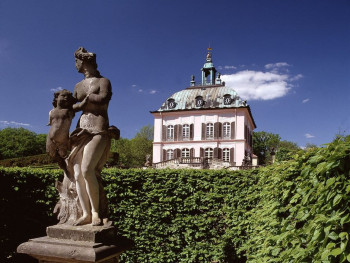
As early as 1542, Duke Moritz of Saxony had a hunting lodge built on a granite dome in the Friedewald Forest, which was rich in wildlife. Built in the Renaissance style, the castle soon became the centre of the Saxon hunting society. In 1661, under the auspices of Elector Johann Georg II, the castle chapel was built, in which regular church services are still held.
In 1723 great reconstruction plans began and the Renaissance building became a Baroque hunting and pleasure palace. Elector Augustus the Strong wanted to celebrate his excessive celebrations and hunts here. His dream of building the "Temple of Diana" with exotic animal enclosures featuring lions, cheetahs and European bisons was only partially realized before his death. The interior design of the seven halls and over 200 rooms was created by the best Saxon craftsmen and artists. An amazing work of art with great architectural clarity and harmony was created.
It was only around 1800, under the great-grandson of the elector, that the surroundings of the castle were further incorporated into the landscape. At this time the Little Pheasant Castle, the harbour and the lighthouse pier at the Lower Great Lake Baernsdorf were built. From 1933 on, the Wettin Prince Ernst Heinrich used Moritzburg Castle as his residence. Ernst Heinrich and his sons buried some of their most valuable art treasures around the palace grounds. These were dug up again in 1996 and you can admire them today in the castle museum.
Interesting facts
- The day pass at Moritzburg Castle is €12 making it one of the 5 cheapest tourist Attractions in Saxony.
How to get there
To reach Moritzburg from Leipzig, drive on the A14 and A4 motorways until exit 80-Dresden-Wilder Mann, then turn right onto Moritzburger Landstraße. Continue straight until you reach Moritzburg.
If you are coming from the north, drive on the A13 motorway until exit 21-Radeburg, then turn left onto Radeberger Straße. Take the fourth exit at the roundabout and the second exit at the next roundabout. Follow the road until you reach Moritzburg.

